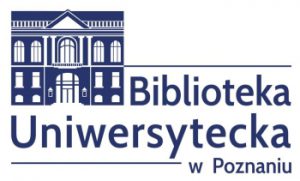Special Collections Department
Old Prints Section
Room 178, tel. 61 829 3829
Monday | 10.00 am. – 6.00 pm |
Tuesday – Friday | 9.00 am. – 2.00 pm. |
Staff:
Dr hab. Rafał Wójcik, academic librarian (kustosz dypl.)
mgr Jakub Łukaszewski, librarian
Availability
Incunabula and old prints can be made available for research purposes following a permission from the head of the Department. Materials are available only in the Reading Room of the Special Collections Department (Room 152) in the opening hours of the Old Prints Section.
Card catalogues (available on site at the Study Room, and partly on-line
-alphabetical and typographical catalogue of incunabula; -alphabectical and typographical of the Polonica from the 16th. c.; -alphabetical of old prints from the 16th. - 18th.c. (chronologically divided and divided into foreign and Polish and Poland-related old prints); -typographical of Poznań and Greater Poland old prints from the 16th. - 18th.c..

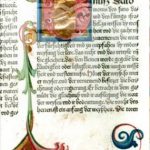

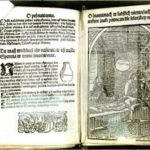
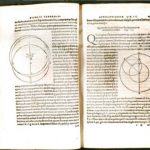
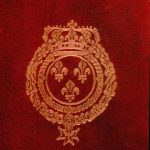
Collection Characteristics
The collection of old prints contains nearly 65 thousand printed items in over 75 thousand volumes as well as 430 incunabula (including the copies that have been preserved only in fragments). This is one of the largest collection of its type in the country. The so-called foreign prints, i.e. those that mainly come from German (16th.-18th.c.) and French (18th.c.) printing offices, are dominant. Old prints published in Poland, or referring to Poland, dating from the 16thc. -18th.c. comprise about 15 per cent of the whole collection.
The provenance of the collection is wide-ranging including in its large part the items from former local book collections originated in Greater Poland and provide enormous insight into the history of this particular region of Poland. In addition, the collection includes a significant number of materials from libraries in Western Pomerania, Courland and Semigallia (including book collections that formerly belonged to the Baltic Germans) as well as some remanants of former book collections from the areas of the former German Reich.
The collection originated with the first old prints and incunabula that had formed the book collection of the Kaiser-Wilhelm-Bibliothek, consolidated from the collection of the Historische Gesellschaft für die Provinz Posen [Historical Society of the Province of Poznan] and complemented by donations from numerous libraries, institutions and well-meaning individuals from the German Reich that wanted to share their double copies. These donations mostly include volumes that come from the Berlin Königliche Bibliothek, the Collegium Hosianum in Braunsberg (Braniewo) and the Königlichen Paulinischen Bibliothek in Münster.
Between 1930-1934, the Polish University Library took over book collections from Greater Poland and Pomeranian gymnasia. These collections included incunabula and more than five thousand old prints, mostly from former libraries dissolved in the nineteenth century (e.g. during the dissoluition of monastic properties of the Cistercians from Koronowo, Paradyż, Bledzew and Obra, the Bernardines from Bydgoszcz, the Benedictines from Lubiń). The most numerous are the volumes from the Poznań-based Maria-Magdalen Gymnasium. The latter collection, in turn, originated with two invaluable and historical Poznan libraries: the library of the Jesuit College and that of Lubrański Academy. Additionally, the rich and comprehensive book collections of the library of the St. Jan of Kęty Gymnasium in Poznań, two libraries of Bydgoszcz-based gymnasia: the Classical Gymnasium and the Humanities Gymnasium, and the Leszno Jan Amos Komensky gymnasium were also taken over by the Library. Less frequent acquisitions came from the gymnasia in Chełmno, Gniezno, Krotoszyn, Ostrów Wielkopolski, Poznań (J. Berger Mathematical and Natural Science Gymnasium), Trzemeszno, Rogoźno and Wągrowiec.
After the WW II, the collection was replenished by thousands of old prints from the so-called abandoned book collections of Polish or German landowners. The remanants from book collections of former manorial libraries from Greater Poland, notably those that belonged to the Mielżyński Family of Pawłowice, the Turno Family of Objezierze, the Skórzewskis of Lubostroń and Czerniejewo-Radomice, the Karłowskis of Szelejewo or the Massenbach Family of Białokosz are of particular note. Book collections from the so-called Recovered Territories, i.e from Werstern Pomerania, Lubusz Land and Silesia, were also obtained by the Library, notably the book collection of the Marienstiftsgymnasium in Stettin and almost all of the book collection of the library of the Bibliothek des Gymnasiums zu Landsberg a/W. A particularly significant part of the collections that has been taken over by the Library was the Freemason collection (currently a separated collection curated by the Freemason Collection staff) as well as works on ocultism and those devoted to alchemy or related to the Rosicrucians (the so-called ”Himmlerian collection or Himmleriana”: seized and later deposited on Himmler’s orders at Sława and Lubogoszcz, from where it was transferred to the Library after the war). During that time, collections that formerly belonged to the Baltic Germans (the rich collection of the Courland Literary Society in particular) as well as numerous volumes from the University Library in Berlin (notably the fragments of the library of the Brothers Grimm) were also shipped to Poznań.
The most important item in the whole collection is the Almanach Cracoviense ad a. 1500. [Leipzig: Wolfgang Stöckel, ca 1500] (call number: Inc. 370). This is a fragment of a unique wall calendar for the year 1500, compiled by an anonymous Cracow astrologist. An invaluable relic of the Polish language of the sixteenth century is the so-called ”Dictionary of Bartłomiej of Bydgoszcz”. The dictionary survived in margin notes in an incunabulum edition of the Vocabularius berviloquus etc., Strasbourg, [Typographus Iordani = Georgius Husner], 14 VI 1488 (call number: Inc. 169). The margins of the leaves of this printed Latin dictionary contain hand written glosses with Polish equivalent words or phrases. They were authored by the Bernardine monk Bartłomiej of Bydgoszcz (1475-1548). The dictionary, containing more than eleven thousand Polish entries, is considered by researchers as ”the largest … collection of Polish lexica from the first half of the sixteenth century” (after: L A. Jankowiak, p. 11). Absolutely unique is also the printed edition of the Roczniki [Annals] by Jan Długosz: Historia Polonica […] In Tres Tomos Digesta. Autoritate & Sumptibus Herbvłti Dobromilski Edita. Dobromili, In Officina Ioannis Szeligæ, 1614 (call number: SD 8719 III), the oldest known in the world. This particular edition was not recorded in Estreicher’s Bibliografia, since at the time of writing the Bibliography, i.e. at the end of the nineteenth century, it was considered to have been lost. The invaluable Polonicum has been identified in one of the antique book shops by Prof. Wiesław Wydra. The volume was purchased and entered the collections of the University Lirbary in Poznań in 2000. Yet another interesting item in the collection is a rare edition of Daniel Klein’s Grammatica Lituanica (Konigsberg, J. Reussner, [after Oct. 6] 1653) and a collection of eight Old Polish diaries, written on the margins of printed multi year calendars from the 16th – 18th. c.
One of the historically most interesting book collections are the surviving remnants of the library of the Jesuit College in Poznań, in which books that formerly belonged to Andrzej Frycz Modrzewski, Jan Łaski the Younger or the Primate Stanisław Karnkowski, still preserved in their original bindings, formed a large part of the collection. Former collections of the Kaiser-Wilhelm-Bibliothek, as well as the Szczecin and Gorzów collections mainly include editions of Protestant works, where naturally works authored by Martin Lurther and Phillip Melanchton are in preponderance; one of the most valuable item is the author copy of the Commentaries to the Book of Psalms by Johann Bugenhagen (Basel: H. Petri, VIII 1535, call number: SD 601 II). The books from the manorial collections include valuable eighteenth century French collective editions of the classics, series of romances and novels (e.g. those from the Pawłowice collection that include 265 volumes of the Bibliotheque des dames from the beginning of the eighteenth century) and popular historical, natural science books, encyclopaedias and adventure/travel books. Of notice are large-format, richly ornamented, editions of picture books from the 17th. – 18th. c. with sights of European cities and countrysides: Theatrum civitatum et admirandorum Italie (Amsterdam: J. Bleau, 1663), Description de Danube (La Haye 1764) or Description gèneral et particulière de La France (Paryż 1781-1796) by Luigi Ferdynand Marsigli.
Inventories and catalogues
Printed inventories and catalogues:
- Incunabula:
Kawecka Zofia, Materiały do katalogu inkunabułów Biblioteki Głównej im. A Mickiewicza, „Zeszyty Naukowe Uniwersytetu im. Adama Mickiewicza w Poznaniu. Biblioteka” 1, 1960, s. 87-143.
Kowalewicz Henryk, Dodatki do katalogów inkunabułów i druków polskich XVI w. Biblioteki UAM w Poznaniu, „Zeszyty Naukowe Uniwersytetu im. Adama Mickiewicza w Poznaniu. Biblioteka” 9, 1970, s. 164-220.
Wydra Wiesław, Katalog inkunabułów Biblioteki Uniwersyteckiej w Poznaniu, Poznań 2002.
- Books on Poland or related to Poland (the Polonica)– 16th. c.:
Cybertowicz Józef, Kowalewicz Henryk, Katalog druków polskich XVI wieku Biblioteki Głównej Uniwersytetu im. Adama Mickiewicza w Poznaniu, Poznań 1963.
Card catalogues (available on site at the Study Room, and partly on-line: https://buuam.digital-center.pl/) :
- alphabetical and typographical catalogue of incunabula;
- alphabectical and typographical of the Polonica from the 16th. c.;
- alphabetical of old prints from the 16th. – 18th.c. (chronologically divided and divided into foreign and Polish and Poland-related old prints);
- typographical of Poznań and Greater Poland old prints from the 16th. – 18c..
Catalogue records of the incunabula and old prints are being systematically introduced to the on-line catalogue of the University Library: https://uam-hip.pfsl.poznan.pl/ipac20/ipac.jsp?profile=
A selection of articles and materials related to the incunabula and old prints from the collection of the University Library:
Głowacka Apolonia, Z dziejów Polskiego Muzeum Szkolnego, „Zeszyty Naukowe Uniwersytetu im. Adama Mickiewicza w Poznaniu. Biblioteka” 6, 1966, s. 3-32.
Idczak Małgorzata, Druki oficyny Manucjuszów w zbiorach Biblioteki Uniwersyteckiej w Poznaniu, „Biblioteka” 8(17)/2004, s. 25- 47.
Jankowiak Lucyna A., Słowniki Bartłomieja z Bydgoszczy (1532 i 1544). Stan badań i perspektywy badawcze, „Poznańskie Studia Polonistyczne. Seria Językoznawcza” 24 (44), 2017, nr 1, s. 11-26.
Jazdon Artur, Poznań [Posen] 1. Biblioteka Uniwersytecka [Universitätsbibliothek], [w:] Handbuch deutscher historischer Buchbestände in Europa, Bd. 6: Polen und Bulgarien, hrsg. B. Fabian, Hildesheim 1999, s. 144-156.
Kowalewicz Henryk, Kalendarz poznański z 1505 roku, „Biuletyn Biblioteki Głównej Uniwersytetu im. Adama Mickiewicza” 1, 1958, s. 41-49.
Kowalewicz Henryk, Oddział starych druków Biblioteki Głównej UAM, „Zeszyty Naukowe Uniwersytetu im. Adama Mickiewicza w Poznaniu. Biblioteka” 2, 1962, s. 167-171.
Krzak Katarzyna, Zagadka tryptykowego obrazka znalezionego w inkunabule, „Biblioteka” 1998, nr 2 (11), s. 55–60.
Łukaszewski Jakub, Neznámý český Almanach Erharda Etzlauba na rok 1527 objevený v poznaňské univerzitní knihovně, „Knihy a dějiny”, t. 26, nr 1-2, 2019, s. 153-158.
Łukaszewski Jakub, Rejestr ksiąg Stanisława Smoły z Wolborza w inkunabule ze zbiorów Biblioteki Uniwersyteckiej w Poznaniu, „Biblioteka” 22 (31), 2018, s. 29-48.
Łukaszewski Jakub, Rożek-Pawłowski Damian, Nowe uwagi do dziejów biblioteki i archiwum Łąckich w Posadowie (w tym o księdze Piotra Skargi i listach Antoniny z Komorowskich), „Przegląd Nowotomyski” 1(53), 2020, s. 34-57.
Łukaszewski Jakub, Wójcik Rafał, Największe zasoby proweniencyjne sprzed 1939 roku w kolekcji starych druków Biblioteki Uniwersyteckiej w Poznaniu [w:] Książka dawna i jej właściciele. Zbiór studiów, pod red. D. Sidorowicz-Mulak, A. Franczyk-Cegły, t. 1, Wrocław 2017, s. 103-115.
Ochmańska Aleksandra, Wielkopolski list miłosny z końca XVI wieku, „Zeszyty Naukowe Uniwersytetu im. Adama Mickiewicza w Poznaniu. Biblioteka” 1, 1960, s. 87-143.
Słownik Bartłomieja z Bydgoszczy. Wersja polsko-łacińska, Cz. 1-6, oprac. Lucyna A. Jankowiak, Irena Kwilecka, Elżbieta Kędelska, Arleta Łuczak, Warszawa 1999-2019.
Wagner Arkadiusz, Nieznana oprawa dla Jana Łaskiego w Bibliotece Uniwersyteckiej w Poznaniu. Przyczynek do badań nad italianizmem w introligatorstwie polskim XVI wieku, „Biblioteka” 16 (26), 2012, s. 23-57.
Wagner Arkadiusz, Uwagi o znakach własnościowych z drugiej połowy XV i pierwszej ćwierci XVI wieku w inkunabułach Biblioteki Uniwersyteckiej w Poznaniu, „Biblioteka” 17 (26), 2013, s. 7-35.
Wagner Arkadiusz, Z badań nad oddziaływaniem grafik Albrechta Dürera na zdobnictwo introligatorskie – renesansowa oprawa z Biblioteki Uniwersyteckiej w Poznaniu, „Sztuka i Kultura” 3, 2015 [2017], s. 21-23, il. 1-4.
Wilgosiewicz-Skutecka Renata, Fragmenty księgozbioru poznańskiego kolegium jezuitów w bibliotekach uniwersyteckich w Poznaniu i w Uppsali [w:] Książka dawna i jej właściciele – stan badań, opracowanie, perspektywy, pod red. D. Sidorowicz-Mulak, A. Franczyk-Cegły, t. 2, Wrocław 2017, s. 245-258.
Wilgosiewicz-Skutecka Renata, Ślady dawnych bibliotek dominikańskich w zbiorach starych druków Biblioteki Uniwersyteckiej w Poznaniu, [w:] Arma nostrae militiae. Kultura książki i pisma Zakonu Kaznodziejskiego na ziemiach polskich, red. I. Pietrzkiewicz, M. Miławicki, Kraków 2019, s. 477-491.
Wilgosiewicz-Skutecka Renata, Szulc Alicja, Lektury lekarza – książka Leonarda Botalla w Bibliotece Uniwersyteckiej w Poznaniu, „Biblioteka”13(22), 2009, s. 181-192.
Wójcik Rafał, Typologia zapisków o poznańskiej proweniencji w kalendarzach wielorocznych z XVI wieku. Rekonesans, [w:] Marginalia w książce dawnej i współczesnej, red. B. Mazurkowa, Katowice 2019, s. 35-64.
Wójcik Rafał, Wokół dwóch diariuszów lekarza i burmistrza poznańskiego, Kaspra Goskiego (1549-1551 oraz 1556-1570) [w:] Memuarystyka staropolska, red. P. Borek, D. Chemperek, A. Nowicka-Struska, Kraków 2016, s. 19-30.
Wójcik Rafał, Zapiski z efemeryd i almanachów z XV i XVI wieku. Plan wydawniczy serii „Diariusze staropolskie” [w:] Kalendarze staropolskie, red. I. Dacka-Górzyńska, J. Partyka, Warszawa 2013, s. 53-60.
Wójcik Rafał, Wydra Wiesław, Jana Żdżarowskiego, kanonika poznańskiego, diariusz z lat 1532-1551, „Kronika Miasta Poznania” 2006, nr 4, s. 43-61.
Wójcik Rafał, Wydra Wiesław (wyd.), Jana Żdżarowskiego, kanonika poznańskiego, diariusz z lat 1532-1551, Poznań, 2009, ss. 50.
Wydra Wiesław, Erasmo-Lascianum w zbiorach Biblioteki Uniwersyteckiej w Poznaniu, „Biblioteka” 1(10), 1997, s. 85-87.
Wydra Wiesław, Glosy i wyrazy polskie z inkunabułów Biblioteki Uniwersyteckiej w Poznaniu, „Slavia Occidentalis” 30, 1973, s. 195-203.
Wydra Wiesław, „Historia Polonica” Jana Długosza z roku 1614 odnaleziona, „Biblioteka” 4(13), 2000, s.107-112.
Wydra Wiesław, Kalendarz na rok 1500, Poznań 2005.
Wydra Wiesław, O jednym kalendarzu zagubionym a drugim odnalezionym oraz o wojnie trojańskiej, „Biblioteka” 3(12), 1999, s. 61-67.
Wydra Wiesław, Oddział Starych Druków, [w:] Zbiory Specjalne Biblioteki Uniwersyteckiej w Poznaniu. Informator, red. K. Michałowski, Poznań 1983, s. 7-13.
